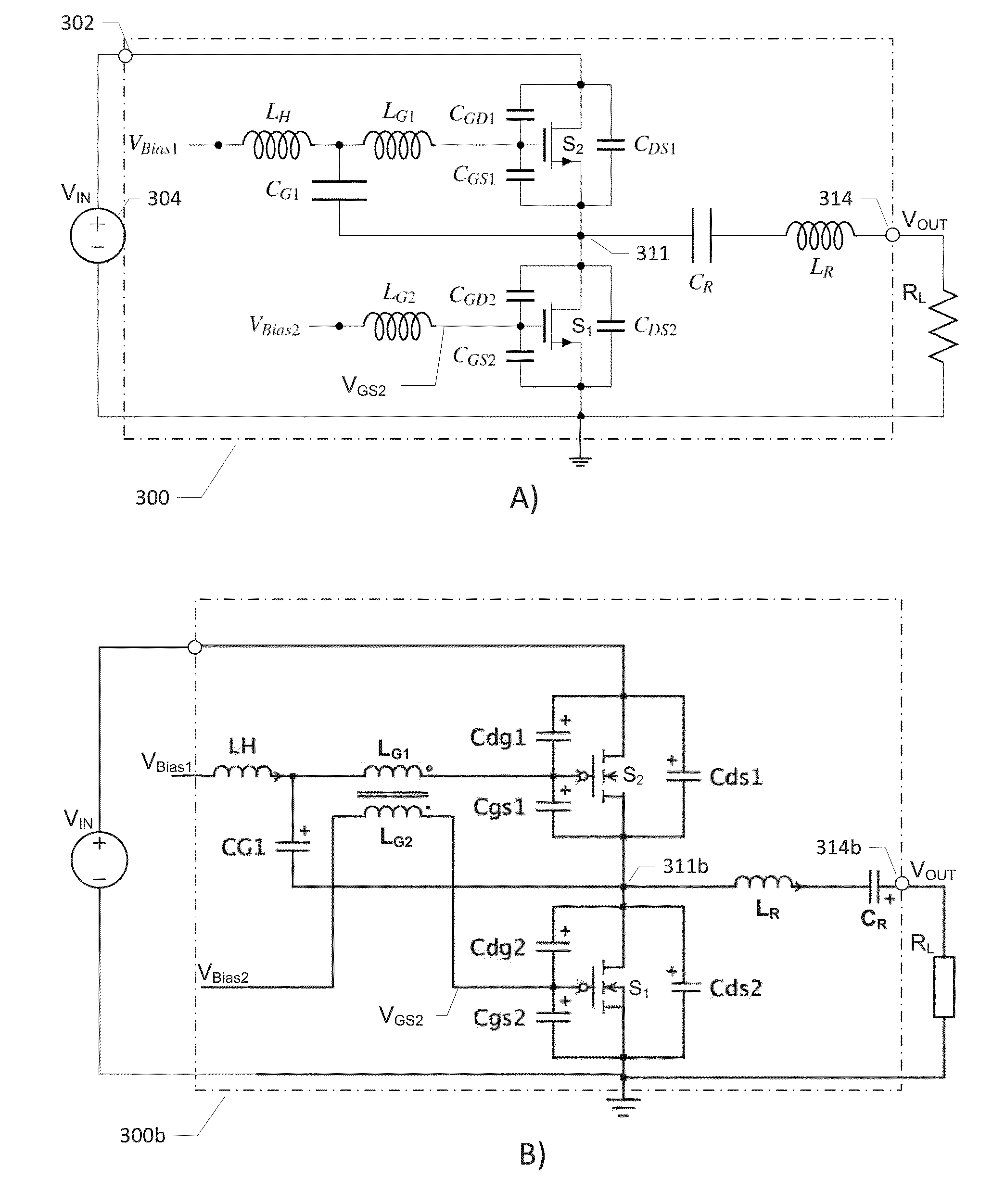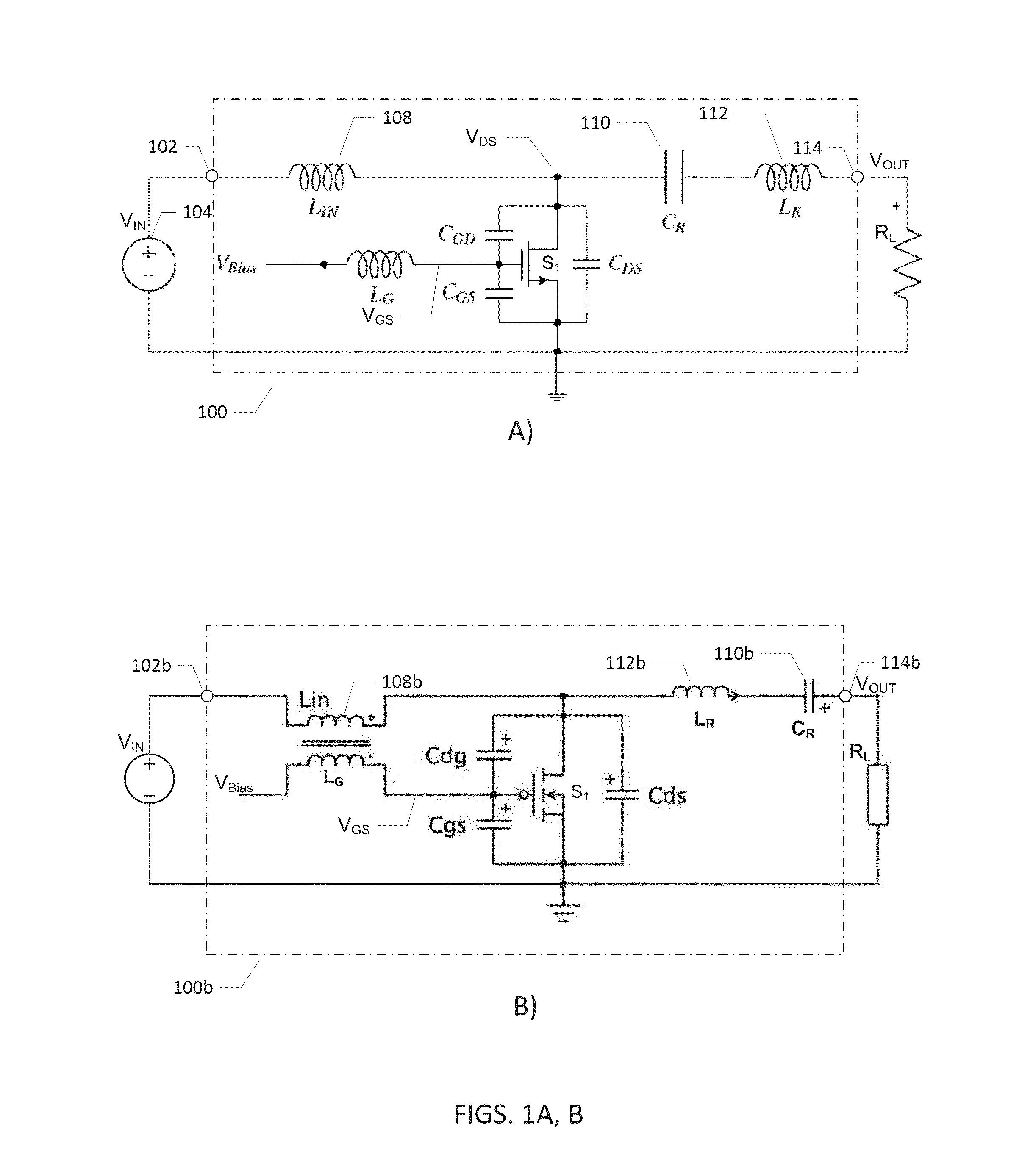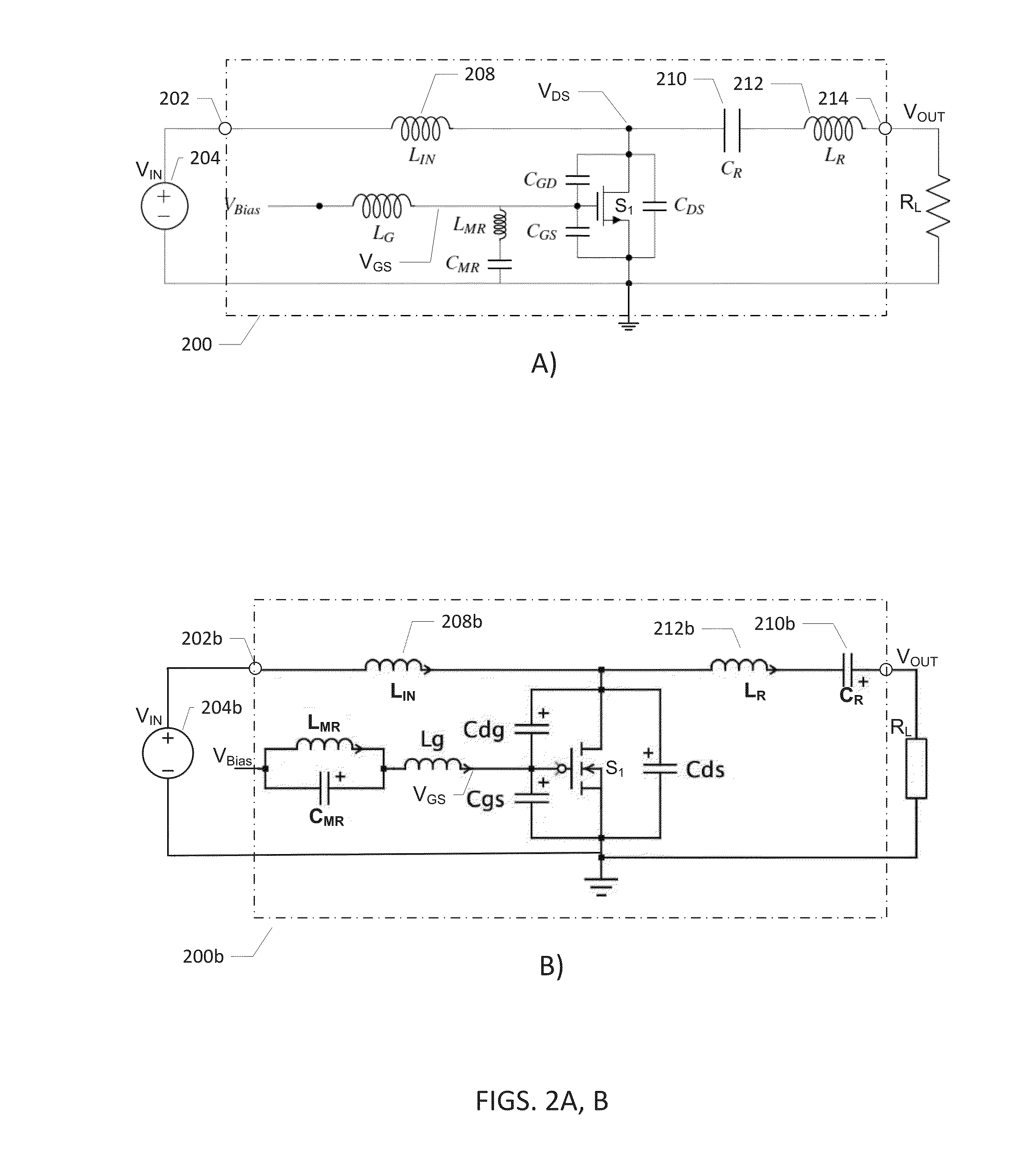Self-oscillating resonant power converter
a resonant power converter and self-oscillating technology, applied in the direction of electric variable regulation, process and machine control, instruments, etc., can solve the problems of inability to quickly and accurately control inability to switch, and inability to achieve fast and accurate control of the output voltage of the resonant power converter, etc., to achieve the effect of fast switch turn-on and turn-off times
- Summary
- Abstract
- Description
- Claims
- Application Information
AI Technical Summary
Benefits of technology
Problems solved by technology
Method used
Image
Examples
first embodiment
[0044]FIG. 1A) is a simplified electrical circuit diagram of a class E resonant power converter 100 in accordance with the invention. The present class E resonant power converter is particularly well-adapted for operation in the VHF frequency range for example at switching frequencies above 10 MHz or even higher such as between 30 and 300 MHz due to, amongst other factors, low switching losses in connection with the operation of a self-oscillating feedback loop connected around a transistor switch element S1 as explained in further detail below.
[0045]The class E resonant power inverter or converter 100 comprises an input pad or terminal 102 for receipt of a DC input voltage VIN from a DC power supply 104. The DC voltage level may vary considerably according to requirements of any particular conversion application such as lying between 1 V and 500 V for example between 10 V and 230 V. A switching network comprises a single switch transistor S1. The skilled person will understand that...
fourth embodiment
[0073]The DC-DC power converter 800 comprises, in addition to the circuitry of the class E resonant power converter 100, a synchronous rectifier building around transistor switch SR1 and comprising additional passive components LG2 and LOUT. The skilled person will understand that the DC-DC power converter 800 may comprise an output capacitor coupled from VOUT to the negative supply rail (e.g. ground) and a voltage control loop similar to the one discussed above in connection with FIG. 4 in the invention. The voltage control loop being configured to control the output voltage at VOUT of the power converter 800 as defined by a DC or AC reference voltage. The transistor switch element SR1 and inductors LG2 and LOUT provide a synchronous rectifier in the DC-DC power converter 800 and replaces the diode based asynchronous rectifier circuit 413 discussed above. Since the control input, e.g. the gate drive signal, of the switching network of the present class E and DE resonant power conve...
PUM
 Login to View More
Login to View More Abstract
Description
Claims
Application Information
 Login to View More
Login to View More - R&D
- Intellectual Property
- Life Sciences
- Materials
- Tech Scout
- Unparalleled Data Quality
- Higher Quality Content
- 60% Fewer Hallucinations
Browse by: Latest US Patents, China's latest patents, Technical Efficacy Thesaurus, Application Domain, Technology Topic, Popular Technical Reports.
© 2025 PatSnap. All rights reserved.Legal|Privacy policy|Modern Slavery Act Transparency Statement|Sitemap|About US| Contact US: help@patsnap.com



